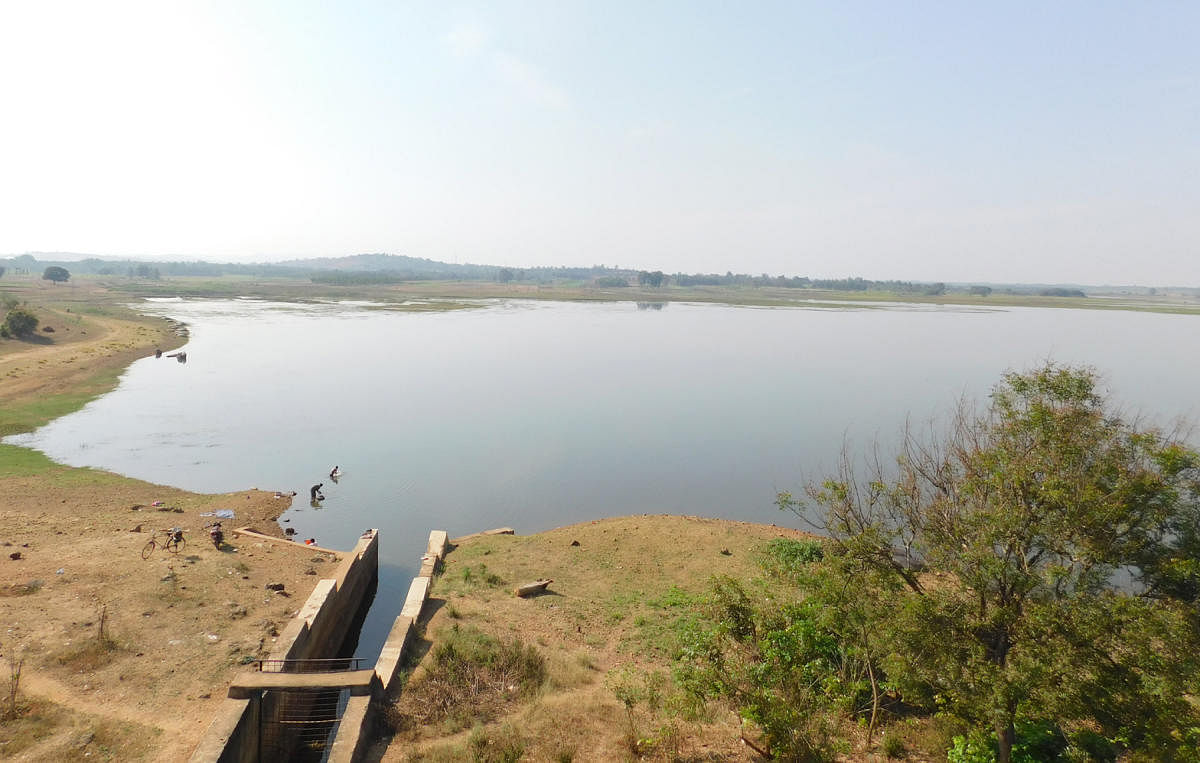Mayadanta male bantanna Madagada kerege ...’ A popular folk song portrays the glorious days of Madaga Lake or Madaga-Masur Lake that straddles Shikaripura taluk of Shivamogga district and Hirekeruru taluk of Haveri district. Today, the presence of silt in the lake has turned it into a grazing land. However, the lake comes back to life during rainy season and becomes a lifeline for farmers of Hirekeruru taluk.
According to folklore, the sacrifice of a woman paved the way for the birth of the lake. To hold this story up, the Shiva Sharane Kenchamma Temple has been constructed in her name near the lake.
The priest of the temple, Shambhulingappa, narrates the folk tale:
“Mallana Gouda, a landlord in Masur district, is said to be responsible for bringing the lake to life for his farmers’ benefit. However, the absence of a water source fails to serve the purpose. So, he seeks divine intervention. Goddess Ganga then tells him in a dream that sacrificing a woman will change the fate of the lake.
Unwillingly, he chooses his daughter-in-law Kenchamma for it. One day, after performing religious rituals in the lake, they both return to the bank. He then asks Kenchamma to bring a back the “forgotten” gold bowl from the middle of the lake.
Realising his intention, she wades through the waters, when heavy rains flood the lake. She throws the gold bowl in the direction of her father in-law and drowns.”
Practically speaking
H M Talawara, a national award-winning teacher from Hirekeruru taluk, who has authored a book on the lake, says though the lake is situated in Shikaripura taluk, it is the lifeline of the farmers in Hirekeruru taluk. Its water is used to irrigate maize, cotton and paddy crops grown on 1,600 acres of land. According to him, the lake hardly dried up over the last few decades. But the deficit rainfall in the last three to four years has dried up the lake.
According to Shivamogga district gazetteer, the lake or tank is formed by embanking the waters of Kumudvathi at a point where it runs through a gorge in a low chain of hills. According to an Arabic inscription, the tank was repaired by the Nawab of Savanur.
It’s widely believed that the tank dates back to Vijayanagara rule. It’s said that a Vijayanagara king witnessed the raising of the great single-stone pillars for the sluices. The sluices of the tank were built on the same principle as other old local sluices — a rectangular masonry channel through the dam was closed with a perforated stone fitted with a wooden stopper.
Instead of small stone pillars, single stones weighing close to 20 tonnes each formed the support system here. This was considered a feat back then.
The tank was restored in 1889-90 by closing a breach and constructing a drain outlet and the left and right bank canals, which facilitated irrigation.
Good intentions
Madaga-Masur Lake Development Agitation Committee President Ningappa Chalageri says the then British officer Playfair and Chief Engineer Vittal Bhavani played a key role in the construction of the canals to help farmers of 29 villages of Hirekeruru and Ranebennur taluks of Haveri district following a breach of the tank.
Both of them visited the lake as part of the survey and decided to renovate it.
They supervised the construction of the canals and the dam across River Kumudvathi for about 20 years, from 1862 to 1882. Their plan was to offer irrigation facility to 29,000 hectares of land in total. But the plan remained only on papers.
